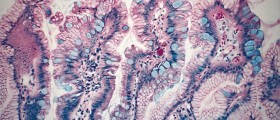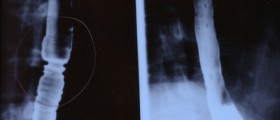
Barrett's esophagus is a medical condition affecting the lining of the esophagus. The condition is considered precancerous, meaning that it can easily progress further into esophageal cancer. Why do Barrett's Esophagus Occur?
Experts connect chronic irritation of the esophagus with stomach acid and the onset of Barrett's disease. In the majority of people the lower muscle of the esophagus functions properly and does not allow regurgitation of stomach acid. However, in people suffering from gastroesophageal reflux disease, small amounts of stomach acid repeatedly enter the esophagus and cause inflammation of certain portions of the organ. As a result, the inner layer of the esophagus gets damaged and some of the cells may even undergo specific transformation. So, in people suffering from Barrett's esophagus some epithelial cells are replaced with cells which do not normally occur in this organ.
The healing process after damage caused by stomach acid is accompanied by so-called metaplasia. So, the damaged surface of the esophagus during the healing process eventually gets covered with the wrong type of cells. This complication is actually reported in approximately 10-15 % of all patients suffering from gastroesophageal reflux disease.
The very presence of these cells is a risk factor for esophageal cancer. This is the reason why once the condition is confirmed, patients must undergo regular check-ups and screening tests which will detect esophageal cancer in early stage (if it eventually occurs) and treat it on time.
Barrett's Disease and Esophageal Cancer - the Connection
People suffering from Barrett's esophagus have certain portions of the esophagus changed. Normal epithelial cells are replaced and there is noticeable columnar epithelial hyperplasia. Such hyperplasia is actually a precursor to esophageal adenocarcinoma, the most frequently reported histological type of esophageal cancer.
The changes occur gradually, so metaplastic columnar epithelium first transforms into low-grade and then high-grade dysplasia which if, left untreated, soon may progress into invasive cancer.
It is estimated that people suffering from Barrett's esophagus have a 30-125 fold higher risk for esophageal cancer comparing to healthy individuals. Fortunately, in them invasive cancer can be detected on time and successfully treated. By undergoing regular exams, especially endoscopy and tissues sampling, patients can be sure that even if cancer occurs, it will be caught in early stage. Once esophageal cells are confirmed to be significantly changed, doctors may opt for photodynamic therapy (PDT) or other procedures to destroy the changes tissue. Surgery to remove the abnormal lining may be performed as well.

















Your thoughts on this
Loading...